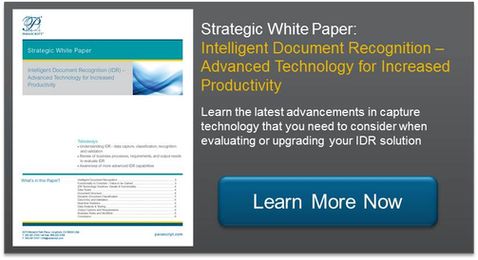In all types of software needs, businesses are often faced with the same challenge identifying the appropriate solution. Unfortunately this identification process is given short-shrift, often ending with a person from IT challenged with creating a list of potential solutions based upon a long laundry list of features or technical requirements. The reality of this situation is that the resulting list of candidate solutions can run the gamut from feature-rich but very complex, to solutions that are more limited but are easier to use. And everything in-between.
When it comes to capture software, this scenario plays out on a weekly basis with business representatives tasked with gathering a short list of potential solutions. And solution vendors are just as culpable in this scenario as they often accentuate their features but typically downplay the hidden costs of installation, configuration, and operational use. And they almost certainly will try and disguise total pricing for the features that they do tout. The result is a lot of frustrated business users from IT and lines of business that are stuck with a solution that is long on the feature list and short on the promise.
Here are some things to look at when considering a capture solution from the hidden costs side.
- Does the solution provide the ability to capture all types of document information in the same solution? This might seem like a weird question, but there are many well-known packages out there that talk about machine print (OCR), ICR, and even unconstrained handwriting, but offer them in different software packages that require additional set-up, configuration, and cost.
- Does the solution handle structured, semi-structured, and unstructured capture in a single solution and within a single workflow? After reading through question #1, this may not seem that surprising. The reality is that many capture solutions separate their structured, semi-structured, and unstructured offerings either due to separate application or to try and charge additional for a solution that can handle all three.
- Does the offering allow configuration of document types/classes and workflows without having to move through multiple applications or user interfaces? The fewer screens or applications required, the easier it is to actually get things done in both a comprehensive and accurate manner. Ask to see how a document type is set-up and count how many different steps are required.
- Does the offering provide a comprehensive test capability of data extraction results? Many solutions have limited capabilities to actually see real world results, in context of the document and to make refinements. Even fewer offer real-time statistics on document classification and field recognition results. Ask to see how results are verified and see if it meets your needs. Having easy and comprehensive access to results and statistics ensures that your capture project will have all bases covered prior to production.
There are a lot of capture solutions out there, and while many have the features and capabilities businesses are searching for, these features are delivered in all sorts of packages. Be sure to find out if the solution is useful AND usable by your organization.
To learn more about the latest advancements in capture technology, download the white paper “Intelligent Document Recognition (IDR) Advanced Technology for Increased Productivity.”




